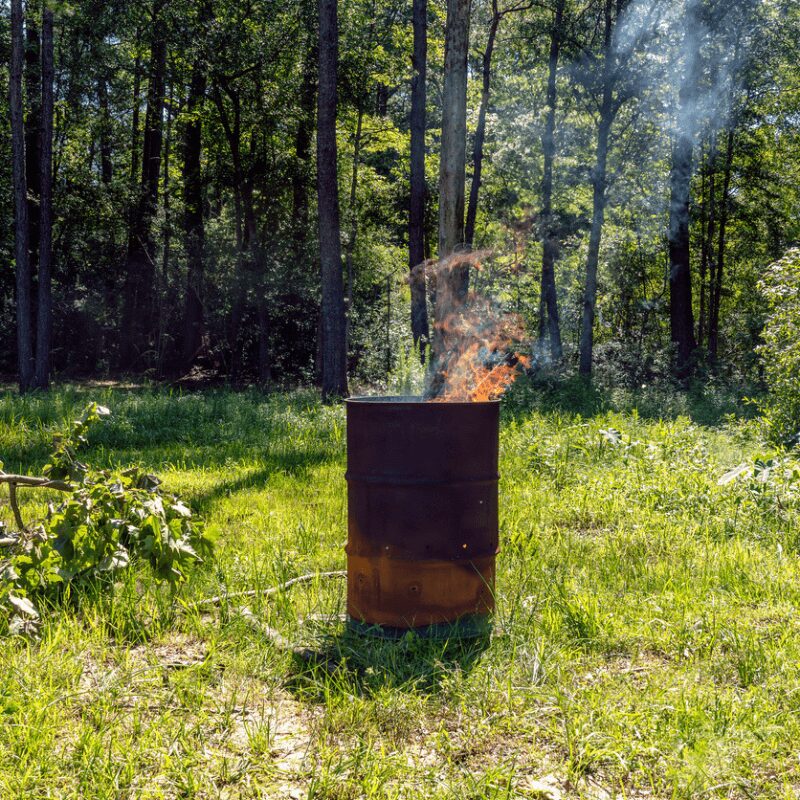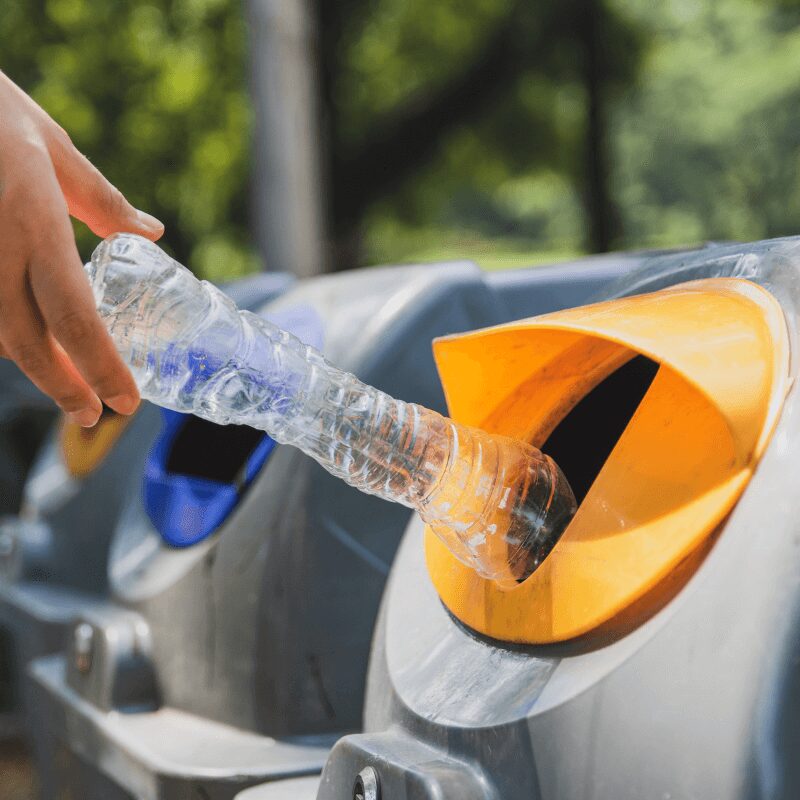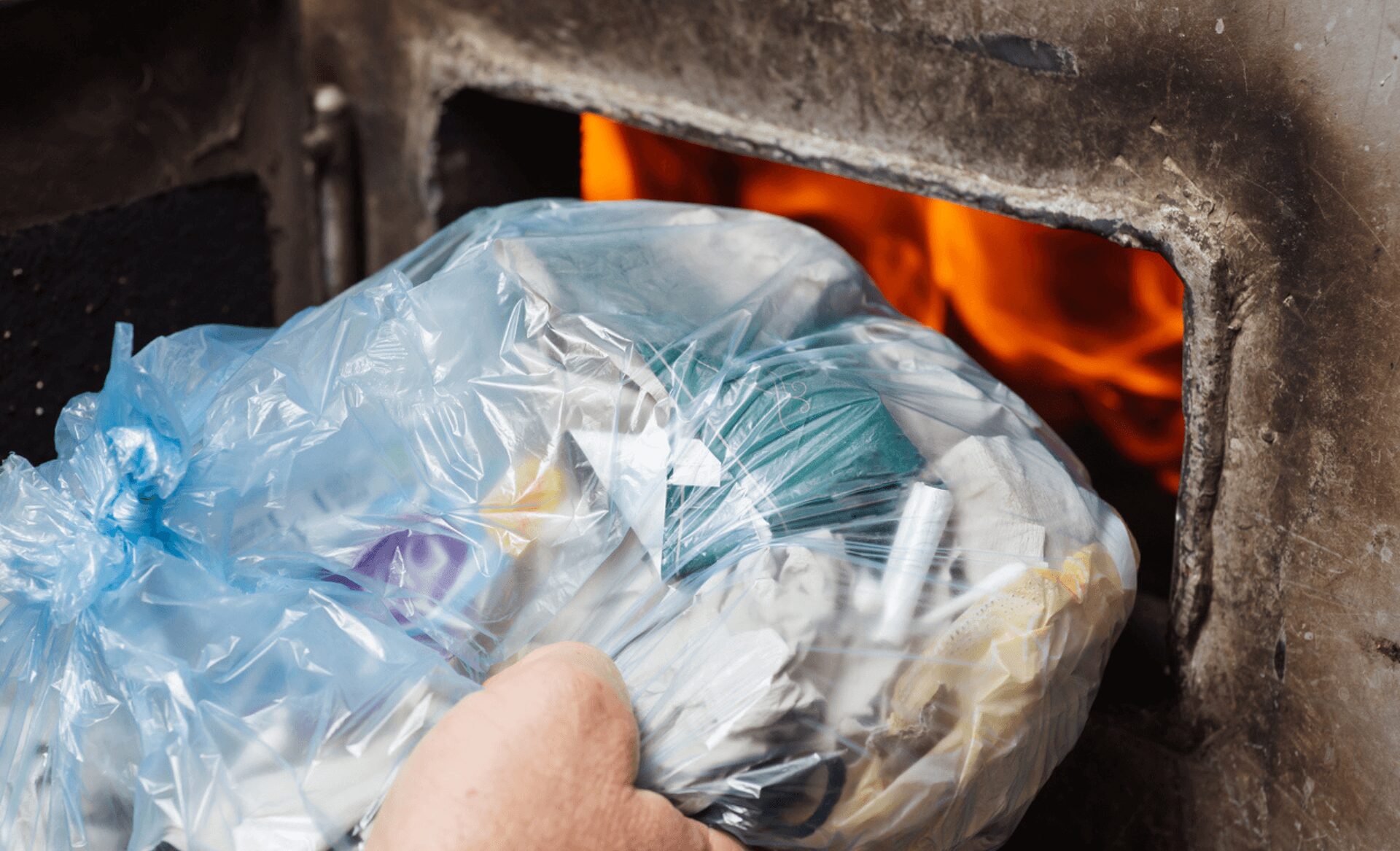When it comes to plastic waste, many of us are simply trying to do the best we can. Whether we’re reusing a bag, cutting back on plastic purchases, or finding alternatives, it’s often difficult to escape plastic altogether. While burning plastic may appear practical for waste reduction, it is highly toxic and releases carbon monoxide, a poisonous gas that negatively impacts both the environment and human health. After all, if it’s gone, it can’t do any harm, right?
Unfortunately, burning plastic has some serious consequences, both for your health and for the planet. Let’s look closer at why burning plastic isn’t the solution and why it can be just as harmful, if not more so, than throwing it away.
The Environmental Impact of Burning Plastic
When plastic is burned, toxic chemicals, including carbon monoxide, are released into the air, contributing to air pollution and harming the environment. Unlike biodegradable materials like wood or paper, plastic doesn’t break down easily. It contains a mix of harmful chemicals, including carbon, hydrogen, and other additives that release pollutants when set on fire.
One of the biggest dangers lies in the release of dioxins and furans—extremely toxic compounds that have been linked to various health issues in both humans and animals. These chemicals are persistent in the environment and can travel far from the source of the fire. Once released, they settle in the soil and water, where they can remain for years, accumulating in the food chain.
Impact on Wildlife and Ecosystems
The environmental damage doesn’t stop with air pollution. Burning plastic also affects wildlife and ecosystems. When harmful chemicals settle in natural areas, they can contaminate plants and water sources, which are vital to wildlife survival. Animals, especially those at the top of the food chain, such as birds of prey or marine mammals, can suffer from long-term exposure to these toxins.
Marine environments are particularly at great risk. Plastic burning near coastal areas can lead to pollutants entering the ocean, affecting marine life and commercial fishing industries. The contaminants can enter fish and shellfish, which humans may consume, posing further health risks.
Health Hazards of Burning Plastic
The dangers of burning plastic don’t just stop with the environment—they also extend to your health. When plastic is burned, it releases toxic chemicals like carbon monoxide, formaldehyde, and benzene, all of which are known to cause respiratory problems and even increase the risk of cancer.
Short-Term Health Effects
Breathing in the smoke from burning plastic can lead to immediate health effects. For example, exposure can cause headaches, nausea, and irritation of the eyes, nose, and throat. In more severe cases, it may trigger asthma attacks or exacerbate existing respiratory conditions like bronchitis or emphysema. Even a brief exposure to these toxic fumes can affect those who are particularly vulnerable, such as children, the elderly, and people with compromised immune systems.
Long-Term Health Risks
The long-term effects of repeated exposure to plastic burning are more serious. Over time, inhaling the toxins can lead to chronic respiratory illnesses, organ damage, and even cancer. Studies have shown that exposure to dioxins and other pollutants released during plastic burning can affect hormone regulation, reproductive health, and the development of certain cancers.
For those living in areas where burning plastic is common, such as communities without formal waste management systems, these long-term risks are compounded. The cumulative effects can have a devastating impact on the overall health of the population.
Impact on Public Health Systems
The health consequences of burning plastic also place a financial strain on public health systems. Medical treatments for respiratory problems, cancers, and other diseases caused by exposure to toxic pollutants are expensive and can overwhelm healthcare services, especially in communities with limited resources. As more people suffer from the effects of burning plastic, healthcare costs rise, draining public resources that could otherwise be used for education, infrastructure, or other vital needs.

Cost of Environmental Cleanup
Additionally, once plastic pollutants have contaminated the environment, it’s costly and difficult to remove them. In many cases, these toxins remain in ecosystems for decades, continuing to harm local communities and economies over time. For example, the cost of cleaning up polluted water sources or rehabilitating wildlife habitats affected by plastic pollution can run into the millions, with taxpayers often footing the bill.
In coastal and fishing communities, plastic contamination can reduce fish populations and harm marine biodiversity, directly impacting the livelihoods of those who depend on the ocean for income. The economic damage caused by plastic pollution is far-reaching and often underestimated.
Better Solutions to Handle Plastic Waste
If burning plastic is so harmful, what are the better options?
- Reduce: The best solution is to limit plastic use altogether. Opt for reusable containers, bags, and utensils to reduce your plastic footprint. While it might seem challenging at first, small changes in our daily habits can add up to significant reductions in plastic waste. For example, carrying a reusable water bottle or shopping with cloth bags can reduce the need for single-use plastics.
- Recycle: If you can’t avoid plastic, try to recycle it. Many communities have recycling programs for different types of plastic. Just be sure to check your local guidelines to know what can and can’t be recycled. Recycling helps ensure that plastic waste is repurposed rather than ending up in landfills or incinerated, reducing the overall environmental impact.
- Composting Alternatives: Consider using biodegradable or compostable alternatives to plastic. Items like compostable bags, utensils, and packaging are designed to break down in a composting environment without releasing harmful chemicals. These products offer a safer, eco-friendly alternative to traditional plastic.

Think Twice Before Burning Plastic
While burning plastic may seem like an easy fix to reduce waste, the long-term effects can be severe—both for your health and the planet. By understanding the environmental, health, and economic consequences, we can make more informed decisions when it comes to handling plastic waste.
Next time you think about burning a piece of plastic, consider the alternatives. Whether it’s recycling, reducing, or proper disposal, every small action can make a difference in the fight against plastic pollution. Burning plastic may seem like a quick solution, but its impacts can linger for years, affecting not just the air we breathe but the land, water, and health of those we love.
Let’s work together to protect both our health and the environment from the dangers of burning plastic, and commit to better, safer ways to manage waste. Every choice we make counts—and so does every piece of plastic we decide not to burn.
Help spread the word about the harm of plastic on the environment by sharing the Bottleless Nation blog and following us on Facebook, Instagram, and LinkedIn!

